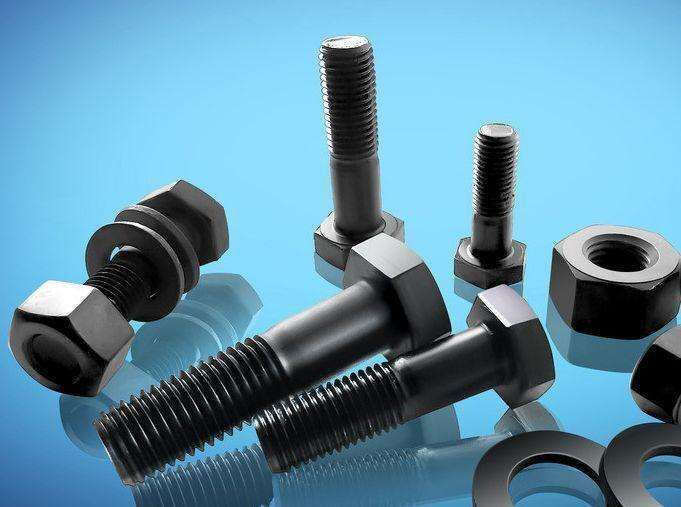Do you Know what Kinds of Hot-dip Galvanized Fasteners there are?
May 06,2022
Galvanized Dock Washers,Chrome Plated Washers,Large Bronze Washers
Hot-dip galvanized fasteners are mainly a kind of surface treatment technology in the production and manufacturing of fasteners. The common types of hot-dip galvanized fasteners include electro galvanizing, Chrome Plated Washers, Large Bronze Washers, and Galvanized Dock Washers.
Daily, it mainly carries out different hot-dip galvanizing surface treatments for hot-dip galvanized fasteners according to different requirements of customers. Let's talk about the types of hot-dip galvanized fasteners.

Electro galvanizing
Electro galvanizing is the most common surface treatment method and process technology in the production and manufacture of fasteners. The electro-galvanized coating is a typical anodic coating, which is mainly used to improve the corrosion resistance of the substrate. Because of its thin coating thickness, it is mainly used for surface anti-corrosion protection under general environmental conditions. After chromate passivation treatment, its anti-corrosion performance is greatly improved. The excellent zinc plating layer can be used for neutral outdoor protection, but its anti-corrosion performance is relatively poor in the harsh industrial atmosphere and coastal climate.
The surface treatment method and process technology of electro galvanizing have the advantages of low cost, stable and reliable process, and convenient use. However, hydrogen embrittlement is very easy to occur, so dehydrogenation treatment should be carried out in time after galvanizing. In addition, it has poor acid and alkali resistance, short anti-corrosion time, and low environmental protection.
Powder zincification
Powder zincification is a surface treatment process in which the zinc dipping agent is used as the zinc source, the zinc is produced by heating, and the iron atoms diffuse each other to form a zinc impregnated layer (zinc-iron alloy layer) on the surface of the steel. The main component of powder zincification is pure zinc powder, in which an appropriate amount of filling materials such as alumina, refractory soil, and ammonium chloride are added.
The most prominent feature of powder zinc infiltration is not an external coating, but the organic integration of base metal and infiltration layer, so the combination is very firm. The hardness and corrosion resistance of powder zinc coating is much better than that of electrodeposited zinc coating. The powder zincification process is to embed the surface treated workpiece into a sealed container containing powder zincification agent, heat it to the melting point of zinc, keep it warm for a certain time, and then cool it to room temperature with the furnace.
The most prominent feature of powder zinc infiltration is that the infiltration layer is uniform, there is no ammonia embrittlement, and almost no deformation. It is especially suitable for the surface anti-corrosion treatment process of nuts, bolts, and other fasteners, hardware products, workpieces with complex shapes, and powder metallurgy products.
Mechanical galvanizing
Mechanical galvanizing is a surface treatment process in which zinc powder, dispersant, accelerator, liquid medium (usually water), and other substances exist, and the impact medium (such as a glass ball) is used to impact and collide the surface of steel parts, to form a galvanized layer on the surface of the parts. Mechanical zinc coating is an anti-corrosion coating formed by a completely different process from electro galvanizing and hot-dip galvanizing.
Process features: during the production operation at room temperature, through the rotation of the plating cylinder of the loaded parts, the impact medium in the cylinder collides with the parts with the rotation of the drum to produce mechanical impact force, and the zinc powder is collided and deposited on the surface of the parts, to form a coating with the basic physical characteristics of metal zinc. Process characteristics: the galvanizing process of the mechanical galvanizing process does not produce hydrogen embrittlement hazard to high-strength steel. Process defects: the thickness of the zinc layer is uneven; The zinc layer is not as smooth and bright as the electroplating layer.
Hot-dip galvanizing
Hot-dip galvanizing is a process and method to form zinc and/or zinc-iron alloy coatings on the surface of pre-treated steel parts into molten zinc, to obtain metal coatings. Hot-dip galvanizing is widely used, such as Double Hot Dipped Galvanized Screws, Galvanized Dock Washers, hot-dip galvanizing highway traffic barriers, hot-dip galvanizing fasteners, and other fasteners widely used in pipeline and power transmission.
The service life of hot-dip galvanizing is not only related to the process itself but also directly related to the adhesion of zinc coating. The hot-dip galvanizing layer has good covering and protection ability, and its ability to resist atmospheric corrosion is better than that of electro galvanizing.
Searching for a Large Bronze Chrome Plated Galvanized Dock Washers Manufacturer from China, you can get high-quality products at a nice price.